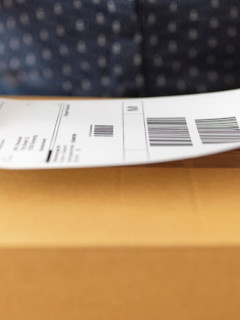At a time when consumers are becoming increasingly environmentally conscious, the role of packaging in building a sustainable brand is becoming crucial. As global environmental awareness grows, companies need to adapt their strategies to respond to customer needs and contribute to environmental protection. Packaging, as an integral part of products, plays a significant role in this process. In what way? Find out how to build a sustainable brand and what this actually means.
What is a sustainable brand?
A sustainable brand is one that takes environmental, social and economic aspects into account in its business operations. It seeks to minimise its impact on the environment, look after the wellbeing of society and ensure long-term profitability.
The key characteristics of a sustainable brand are:
- Environmental awareness – understanding and reducing carbon footprint and striving for sustainable management of natural resources.
- Social ethics – caring for employees, supporting local communities and promoting equality.
- Innovation – using cutting-edge technologies and approaches that promote environmental protection.
Sustainable brands strive to create products that not only meet consumer needs but also contribute to a better world. Packaging is one of the key elements of this strategy.
How can packaging choices influence sustainable branding?
Packaging plays an important role in building a sustainable brand image. Choosing the right materials and production processes can significantly influence consumer perceptions of a company.
What packaging can support sustainable branding?
- Use of biodegradable and compostable materials – packaging made from materials that break down easily helps reduce the amount of waste going to landfill.
- Recycling and reuse –recyclable orreusable packaging can significantly reduce environmental impact.
- Material minimisation – reducing the amount ofmaterial used in packaging production helps to reduce the consumption of natural resources.
- Renewable energy in the production process – using renewable energy sources in the packaging production process can significantly reduce a company’s carbon footprint.
- Ethical sourcing of materials – choosing raw materials from certified sustainable sources contributes to a positive brand image.
Through such actions, companies can contribute to environmental protection.
What other environmental measures can a brand take?
In addition to choosing appropriate packaging, brands can take a number of other environmental actions that support their sustainable image. What might these include?
- Consumer environmental education – informing customers about the benefits of using sustainable products and how to dispose of them correctly, including answering the question: how do you separate cardboard and paper packaging?
- Sustainable logistics – optimising logistics processes to reduce CO2 emissions, for example by using electric vehicles or planning delivery routes.
- Collaboration with environmental organisations – partnering with non-profit organisations that work to protect the environment can help promote environmentally friendly measures.
- Green certifications – obtaininggreen certifications, such as LEED, FSC or ISO 14001, which demonstrate a company’s commitment to sustainability.
- Reducing water and energy consumption – investing in technologies that save water and energy in production processes.
- Recycling programmes – implementing programmes that allow customers to easily recycle packaging and products after use.
Read also: How to use waste film?
Building a sustainable brand is a process
Building a sustainable brand is a process that requires consideration of many environmental, social and economic aspects. Choosing the right packaging is one of the key elements that can significantly influence a company’s image as environmentally friendly. Using biodegradable materials, recycling, minimising the amount of raw materials used and sourcing materials ethically are just some of the measures that can support sustainability.
In addition, taking extensive environmental measures, such as consumer education or optimising logistics, can further strengthen a brand’s position as a responsible and environmentally-conscious company.
Pursuing sustainability not only contributes to protecting the planet, but also builds loyalty and trust among environmentally conscious consumers. It therefore brings many benefits.














